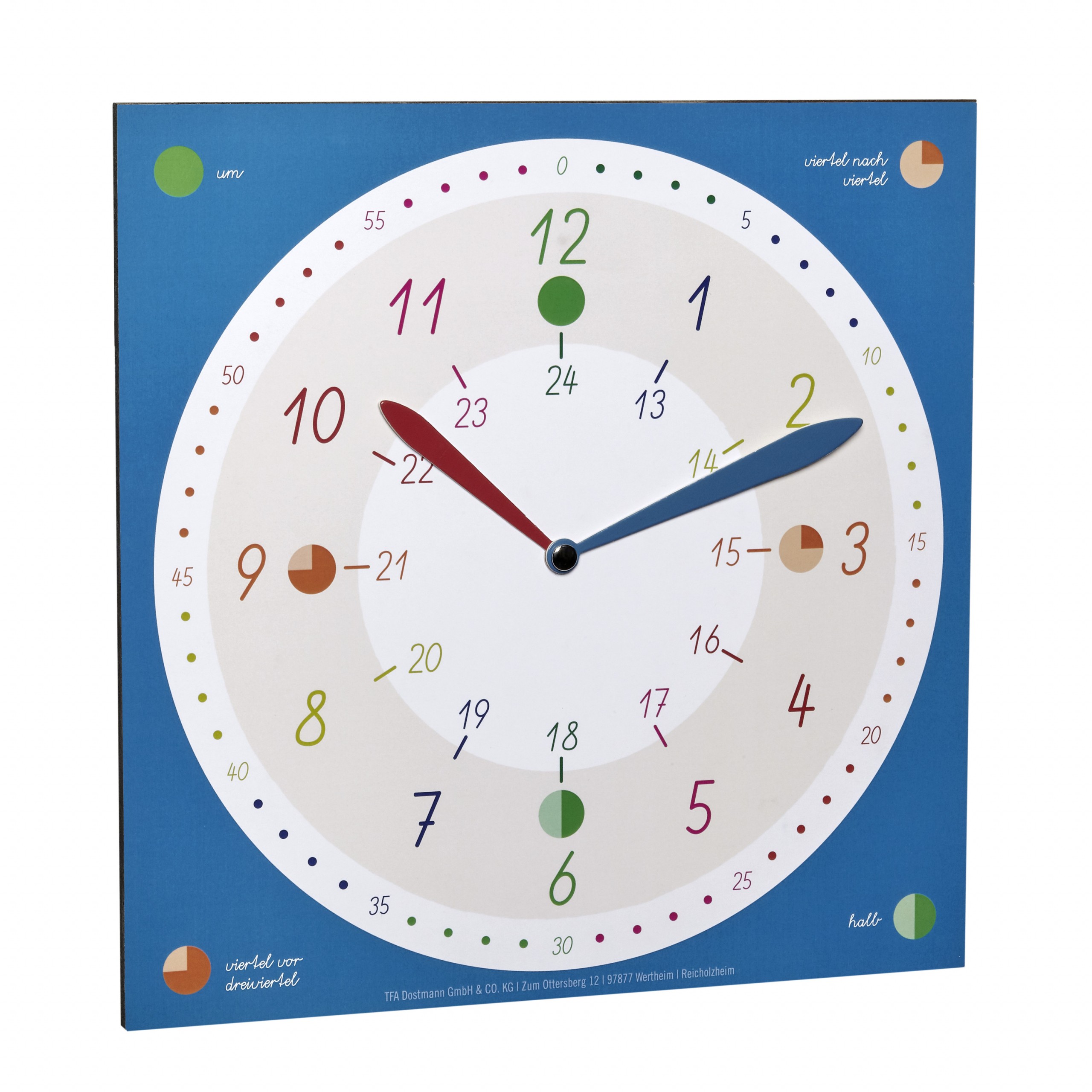Learning to tell time is a crucial developmental milestone for children, and the Tick & Tack learning clock is designed to make this educational journey engaging and effective. This toy learning clock is more than just a plaything; it’s a carefully crafted tool to help children grasp the concept of time in a playful and intuitive way. With its bright colors and thoughtful design, the Tick & Tack clock is an ideal resource for parents and educators looking to introduce young learners to the world of hours and minutes.
Key Features of the Tick & Tack Learning Clock
The Tick & Tack child’s learning clock is packed with features that make learning to tell time easier and more enjoyable for children:
- Interactive Rotating Hands: The clock features rotating cardboard hands that children can manipulate to set different times. This hands-on approach is essential for kinesthetic learners, allowing them to physically interact with the clock and understand the movement of time. Setting the time themselves helps children actively participate in the learning process, making it more memorable and impactful.
- Color-Coded Hour and Minute Markers: Distinguishing between hours and minutes can be confusing for young children. The Tick & Tack clock simplifies this with colored markers. This visual cue helps children differentiate between the hour and minute hands and their corresponding scales, making it easier to read the time accurately.
- Comprehensive Time Markings: This learning clock goes beyond basic hour markings. It includes minute markings in increments of five around the outer ring, numbered for easy recognition. The clock also features inner rings displaying hours from 1 to 12 and 13 to 24, introducing children to both 12-hour and 24-hour clock formats. This comprehensive approach prepares children for various time-telling scenarios they might encounter.
- Quarter Hour Symbols: To further aid understanding, the Tick & Tack clock uses small circle symbols to represent quarter-hour intervals – quarter past, half past, quarter to, and o’clock. These visual representations help children grasp fractional time concepts and associate them with common time-related phrases.
- Durable and Child-Friendly Materials: Made from MDF and cardboard, the Tick & Tack learning clock is designed to withstand enthusiastic handling by children. The materials are safe and sturdy, ensuring the clock can be a long-lasting learning companion.
Why Choose a Learning Clock for Your Child?
Using a dedicated child’s learning clock like the Tick & Tack offers several advantages in the time-telling education process:
- Playful Learning: The toy-like design transforms learning into playtime. Children are more receptive to learning when they are engaged and enjoying themselves. The Tick & Tack clock makes mastering time a fun activity rather than a chore.
- Develops Fine Motor Skills: Manipulating the rotating hands of the clock helps children develop their fine motor skills. This physical interaction enhances hand-eye coordination and dexterity, contributing to their overall development.
- Visual and Tactile Learning: The combination of visual cues like colors and markings with the tactile experience of moving the hands caters to different learning styles. This multi-sensory approach reinforces learning and helps children understand time concepts more effectively.
- Prepares for School Success: Learning to tell time is a fundamental skill expected by the second grade. Introducing a learning clock early on gives children a head start and builds confidence for their academic journey. Mastering this skill reduces potential stress and allows children to focus on other learning aspects in school.
- Bright and Engaging Design: The vibrant colors of the Tick & Tack clock are not only visually appealing to children but also contribute to maintaining their interest and motivation during learning sessions. It also serves as an attractive addition to any child’s room, making learning accessible and ever-present.
When to Introduce a Learning Clock
Experts recommend introducing the concept of time and a learning clock around the age of 5 to 6 years old. By this age, most children have developed a basic understanding of numbers and counting, which are essential prerequisites for learning to tell time. It’s important to ensure that children have a solid foundation in number recognition before embarking on time-telling lessons.
The Tick & Tack child’s learning clock is a valuable educational tool that combines fun and functionality to make learning to tell time an enjoyable and successful experience for young children. Its thoughtful design and child-friendly features make it an excellent investment for parents and educators seeking effective resources to teach this essential life skill.
